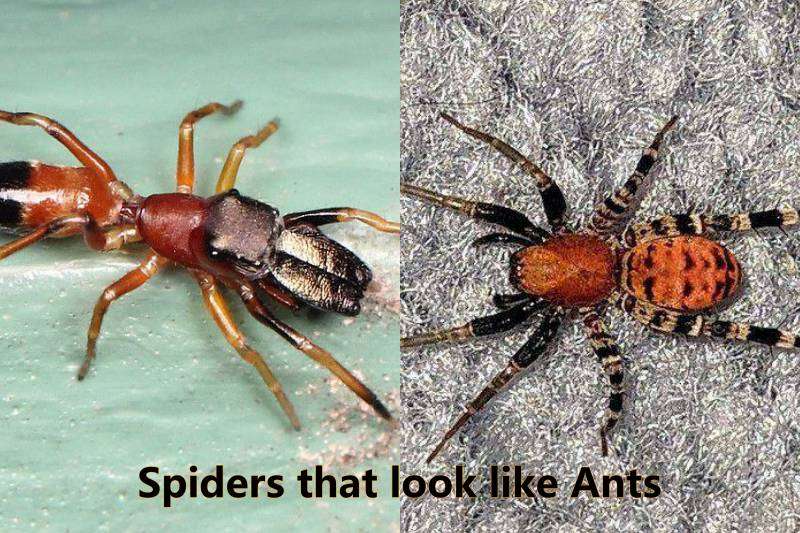Spiders frequently mimic ants in terms of morphology and also in behavior. Ants have a variety of strong defensive characteristics that are species-specific, such as strong jaws and stings, defenses against chemicals, and overall aggression. These spiders may also use their ability to hunt the unaware ants, especially when the spiders co-habit with the ants. In this article, we are going to talk in detail about 15 Interesting Spiders that look like Ants.
15 Interesting Spiders that look like Ants
1. Dark-footed Ant Spider
The Dark footed Ant Spider mimics the ants belonging to the genus Crematogaster. In contrast to its relatives, this spider resides in silken apartment buildings made up of numerous separate silken nests.
Dark feet mimic frequently live in nests in association with other jumping spider species. Ants are fierce defenders of their colonies, and any predator thinks multiple times before launching an attack.
On the contrary, jumping spiders become easy prey, especially for some of the larger jumping spiders. The Dark footed spider ants take advantage of their similarity to these ants to fool predators and use the ants as a shield.
- Scientific name: Myrmarachne melanotarsa
- Size: 4 millimeters
- Location: Lake Victoria (Africa)
2. Red-Weaver Ant mimicking jumper
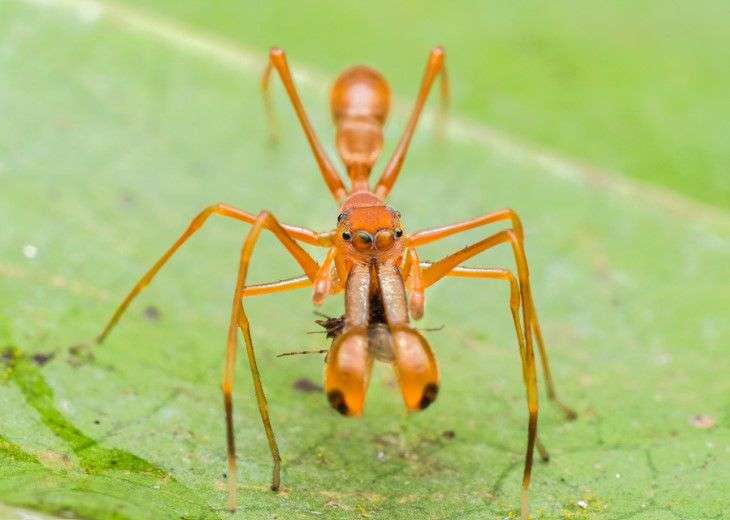
As their name would imply, these ants, particularly the females, resemble weaver ants in size, form, and also color. The males have jaws that resemble a minor ant when closed, while the females resemble weaver ants showing Batesian Mimicry.
The weaver ants have colonies in the trees and bushes where the spiders reside. Because weaver ants taste unpleasant and bite painfully, these spiders can avoid predators by imitating the ants and staying near them.
- Scientific name: Myrmaplata plataleoides
- Size: 6-7 millimeters (female), 9-12 millimeters (male)
- Location: Southeast Asia, like India, Sri Lanka, and China
3. Myrmarachne maxillosa
This jumping spider, which mimics an ant, eats other insects or the actual ants. Keep in mind that only six out of its eight legs stay on the ground, while with the front two serve as antennas.
It has even taken a step further, as it moves around in a jerking manner similar to an ant. The spider appears to be a fully armored army ant thanks to its exceptionally long fangs, which are a part of the same trick.
- Scientific Name: Myrmarachne maxillosa
- Size: 1 centimeter
- Location: Thailand
4. Myrmarachne formicaria
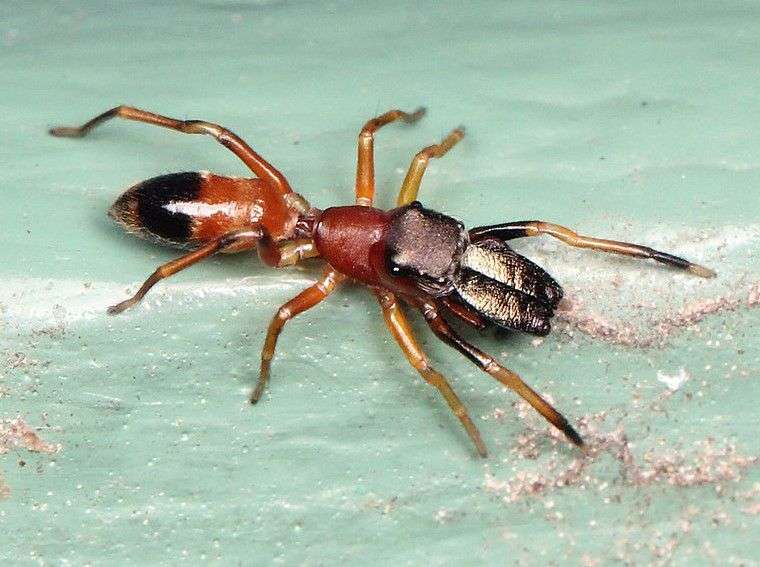
The species Myrmarachne formicaria has an elongated body that resembles a little ant, like the invasive species, Myrmica rubra, popularly known as the European fire ant, in Ontario.
This mimicry is a fantastic example of an association between two alien creatures in a foreign land. The spider has long, slender legs that mimic ants’ legs, and its banded forelegs somewhat resemble an ant’s antennae.
The spiders appear to avoid interacting with the ant workers on purpose. They may move among the ants, but they never approach them directly.
- Scientific Name: Myrmarachne formicaria
- Size: 6-7 millimeters
- Location: Europe, USA
5. Long-Palped Ant-Mimic Sac Spider
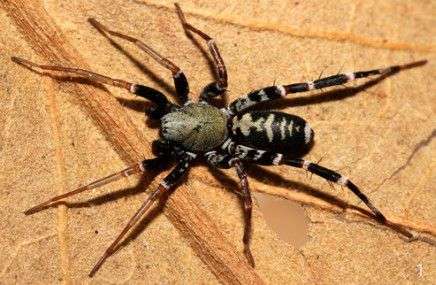
Typically found close to the ground, behind rocks and logs, or in leaf litter, this lovely species of ant mimic spider can be found in a wide spectrum of environments.
They hunt their prey on the ground, and unlike other spiders, they do not make a web to do so. Instead, they go “on foot” hunting.
With slow waves of their forelegs in the air like antennae, these spiders mimic the carpenter ants. The mimic here is not in the appearance but more in the behavior.
- Scientific name: Castianeira longipalpa
- Size: 6-10 millimeters
- Location: Canada, USA
6. Strobe Ant-Mimic Jumping Spider

A tiny, thin imitation that usually has a crimson or orange midsection but can occasionally be completely dark brown or black. This species imitates the Opisthopsis haddoni, a very erratic and swift black-and-orange ant (Strobe ant).
The jumpers behave similarly to strobe ants and wave their front legs around to resemble antennae, in addition to having a similar appearance.
These spiders are thought to chemically resemble ants, fooling the ants into thinking the spider is one of them. Crickets serve to be the primary diet of these spiders.
- Scientific name: Myrmarachne bicolor
- Size: 6-9 millimeters
- Location: Australia
7. Toxeus alboclavus
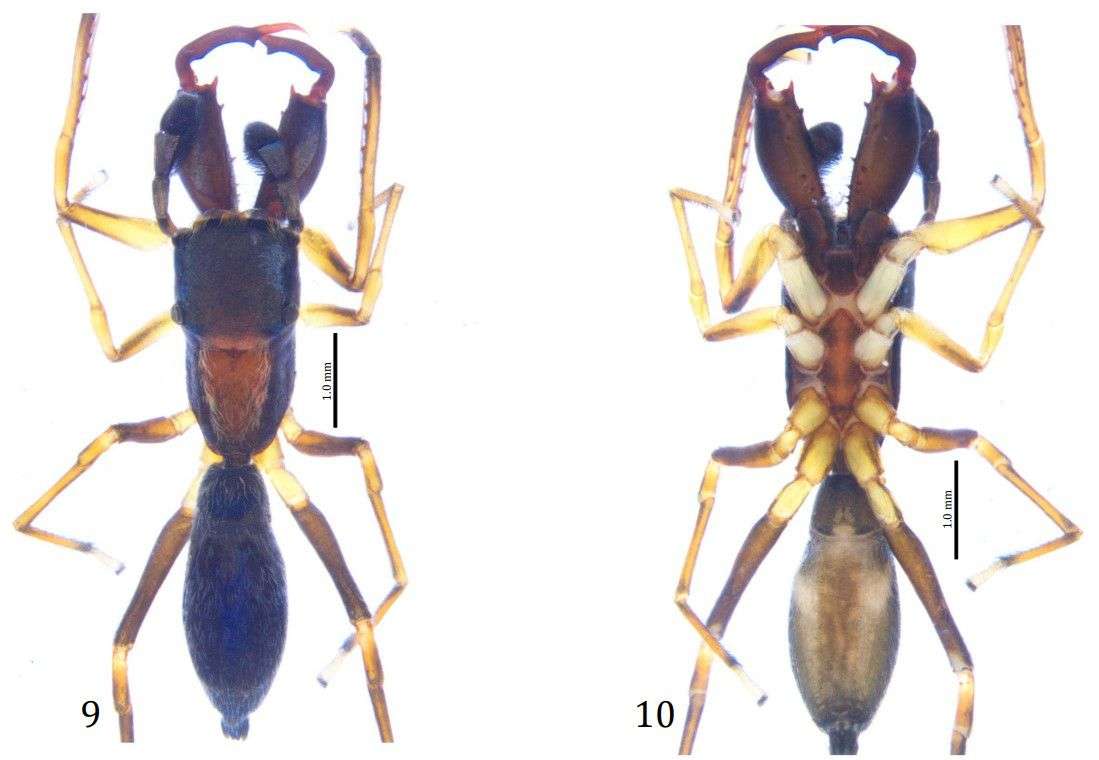
Both sexes have an oval abdomen that is dark brown with scattered silver patches embedded with black dots. Males like to hide under dry leaf litter, while females construct triangular webs between dry tree twigs and consume small insects.
The forward-extending fangs have a distinctive antler form. By elevating their front set of legs while walking, they exactly imitate ants as a defense against prospective predators.
- Scientific name: Toxeus alboclavus
- Size: 3-4 mm
- Location: Western Ghats in South India
8. Red Spotted Ant Mimic Sac Spider
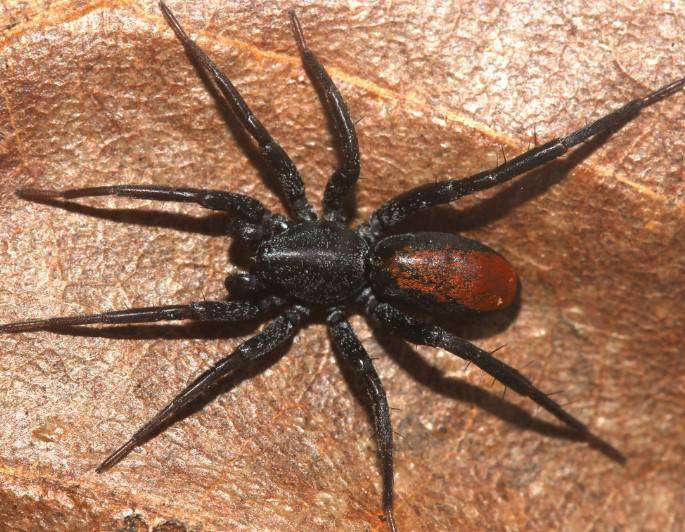
The red-spotted ant mimic spider gets its name from the way it resembles ants, which includes walking on 6 legs instead of 8 and exhibiting the forelegs as antennae.
By tricking the ants into believing the spider is one of them, they allow it to wander around them. The spider then feeds on the ants.
Because it is black and hairless with red markings on its back, this spider is occasionally mistaken for some species of the Black Widow.
- Scientific name: Castianeira descripta
- Size: 0.5-1 centimeter
- Location: USA and Canada
9. Greater Ant-Mimic Corinne Spider
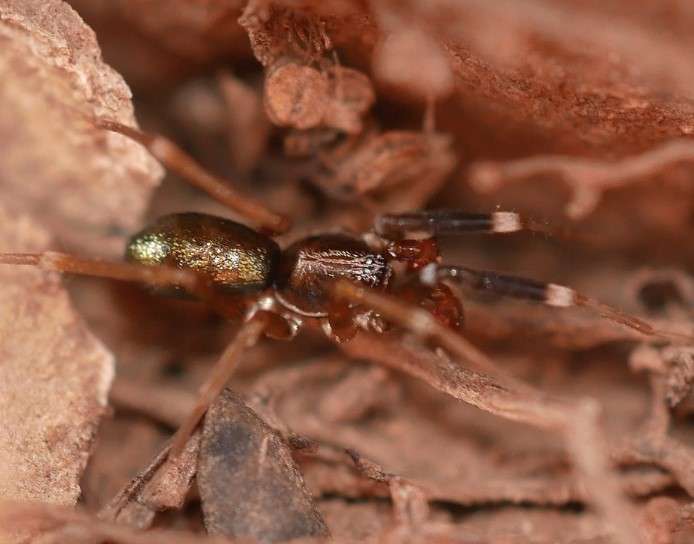
The next spider species on this list Spiders that look like Ants is the Greater Ant Mimic Corinne Spider.
It can be founded only in North America. Currently, there is not much information about it. Based on various images, these spiders are brownish-black with an enlarged oval mid-black in color.
These spiders look perfectly like ants, but the only difference is the number of legs. Greater Ant-Mimic Corinne Spiders have 8 legs, whereas ants have only 6 legs.
- Scientific name: Phrurotimpus borealis
- Size: 6-10 millimeters
- Location: North America
10. Two-Banded Ant Mimic Sac Spider
The Two-Banded Ant Mimic Spider resembles carpenter ants in terms of size, color, and general body shape. There is a chance that the two light bands on the abdominal region will make it appear as though there are three body segments rather than just two.
What’s more amazing is that the spiders act like ants and sometimes even show up with ants to further their masquerade. Even their movement resonates quite well with the ants.
- Scientific name: Castianeira cingulata
- Size: 6-8 millimeters
- Location: Canada and USA
11. Orange Ant Mimic Sac Spider
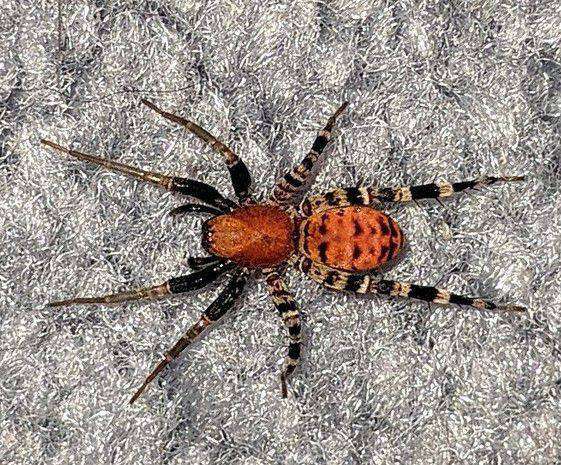
The Corinnidae spider family includes the Castianeira amoena spider. As a sort of aposematism, its coloring and patterns serve to ward off predators. They resemble tigers in color and have black stripes covering their abdomen.
Because of their coloring, which mimics a dangerous wasp, predators stay away from them. Although their bite is reputed to sting, it doesn’t kill humans. The spiderlings fly and move by using their webs. They generate silk threads to stop them from falling.
- Scientific name: Castianeira amoena
- Size: 0.66 centimeters
- Location: Mexico and USA
12. Slender Ant Mimic Jumping Spider
Interestingly, despite being preyed upon by ants, the thin-jumping spider that mimics ants chooses to nest adjacent to ant mounds. The design will prevent ants from penetrating it, and the smell of the ant nest will deter other predators like mantises, larger species of ants, and even other spiders.
The spider’s narrowed abdomen, which has developed to resemble an ant’s abdomen, gives rise to its name. Lighter specimens have paler markings, whereas darker specimens have white markings.
- Scientific name: Synemosyna formica
- Size: 4-5 millimeters
- Location: Canada and Eastern USA
13. Ant Like Crab Spider
By imitating ants and coexisting with them so they can feed on them, this crab spider outsmarts them. The spider mimics the weaver ant (Oecophylla smaragdina) and belongs to the family Thomisidae.
Similar to crabs, these spiders have a distinctive sideways gait. When viewed from behind, the two dark spots on the back of this species resemble the eyes of the weaver ant, while the spider’s abdomen resembles the ant’s head.
They reside close to the weaver ant nest in the same tree and feed at night on the unaware weaver ant workers.
- Scientific name: Amyciaea forticeps
- Size: 6-8 millimeter
- Location: Indian. China. Malaysia
14. Aphantochilus rogersi
It imitates the Cephalotes ant species, which is their favorite prey. It has the peculiar behavior of raising the exoskeletons of dead ants like a shield.
This could be a form of defense to secure itself from its adversaries, or it could be a camouflage or masking of its identity that enables it to approach and overwhelm other ants.
- Scientific name: Aphantochilus rogersi
- Size: 10 millimeters
- Location: South America
15. Variegated Ant-Mimic Sac Spider
The last spider on this list of Spiders that look like Ants is the Variegated Ant-Mimic Sac Spider. Their exoskeleton is covered with fine white hairs and ranges in color from reddish-brown to nearly black.
They certainly don’t do a fantastic job of mimicking ants; in fact, they appear more like spiders. They behave and move like ants, though; they move in zig-zag patterns, wobble their abdomens, and wave their front legs much like the antennae of ants.
Although they don’t eat ants, they do coexist with them because doing so confuses and scares away predators.
- Scientific name: Castianeira variata
- Size: 7-9 millimeters
- Location: Central and North America
Now we come to the end of this article, Spiders that look like Ants. Stay tuned with us for many more such articles in the future.
References:
MarkEisingBirding- Myrmarachne maxillosa (Jumping Spider sp.)
scientific reports-
Constraints on the jumping and prey-capture abilities of ant-mimicking spiders (Salticidae, Salticinae, Myrmarachne) Yoshiaki Hashimoto et al.
Gil Wizen- Constraints on the jumping and prey-capture abilities of ant-mimicking spiders (Salticidae, Salticinae, Myrmarachne) by Yoshiaki Hashimoto et al.
Missoula ButterflyHouse- Long-palped Ant-mimic Sac Spider (Castianeira longipalpa), Juvenile Male
Also Read:

A zoology student turned writer. Nature has always been a magnet to me, and to unearth some of its secrets through my articles is my prime intention. If not engaging myself with nature and anime content, you can always find me going through some Bengali classics or filling the air with some soulful Tabla beats. An artist, trying to throw some colors to my blank canvas of life.
